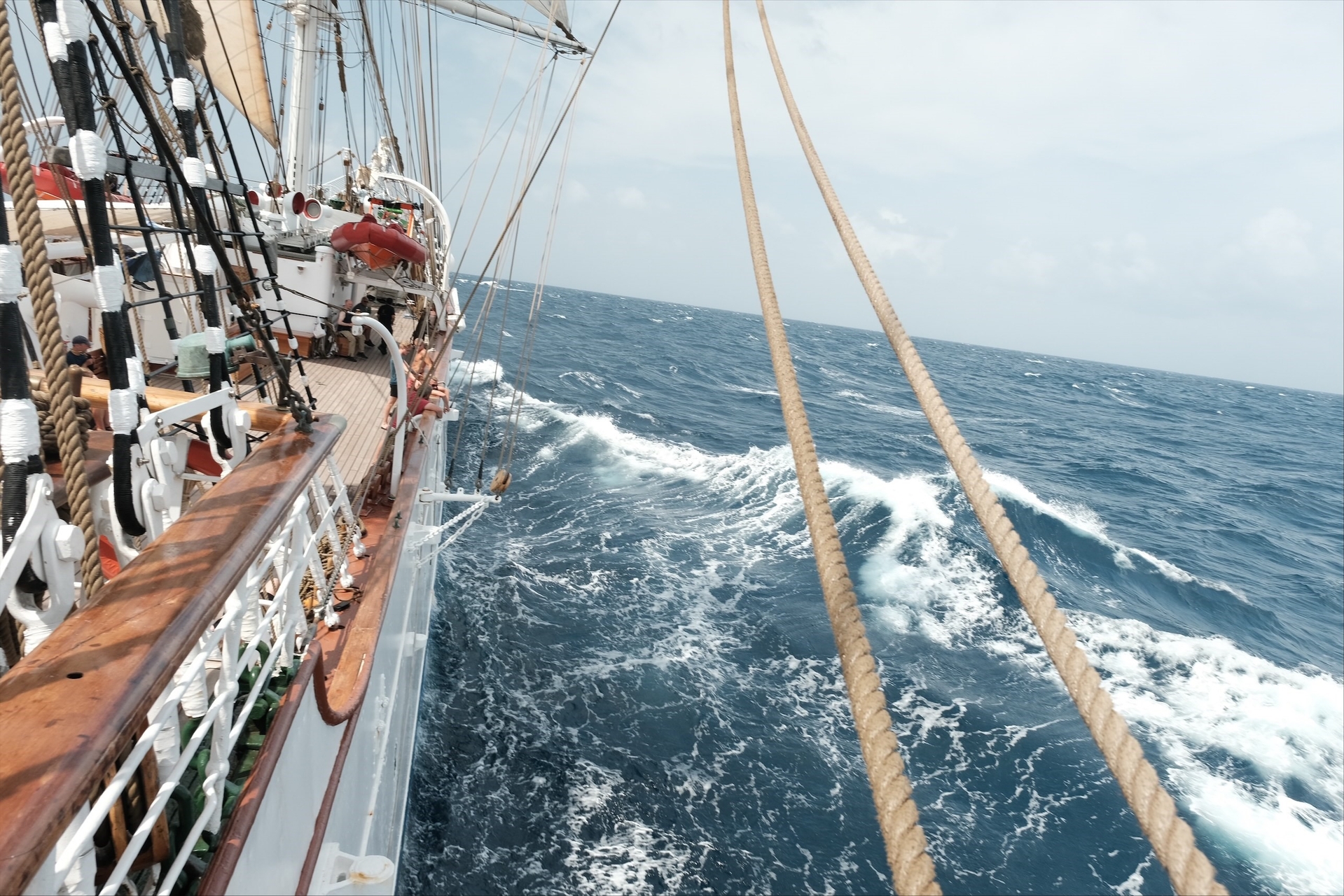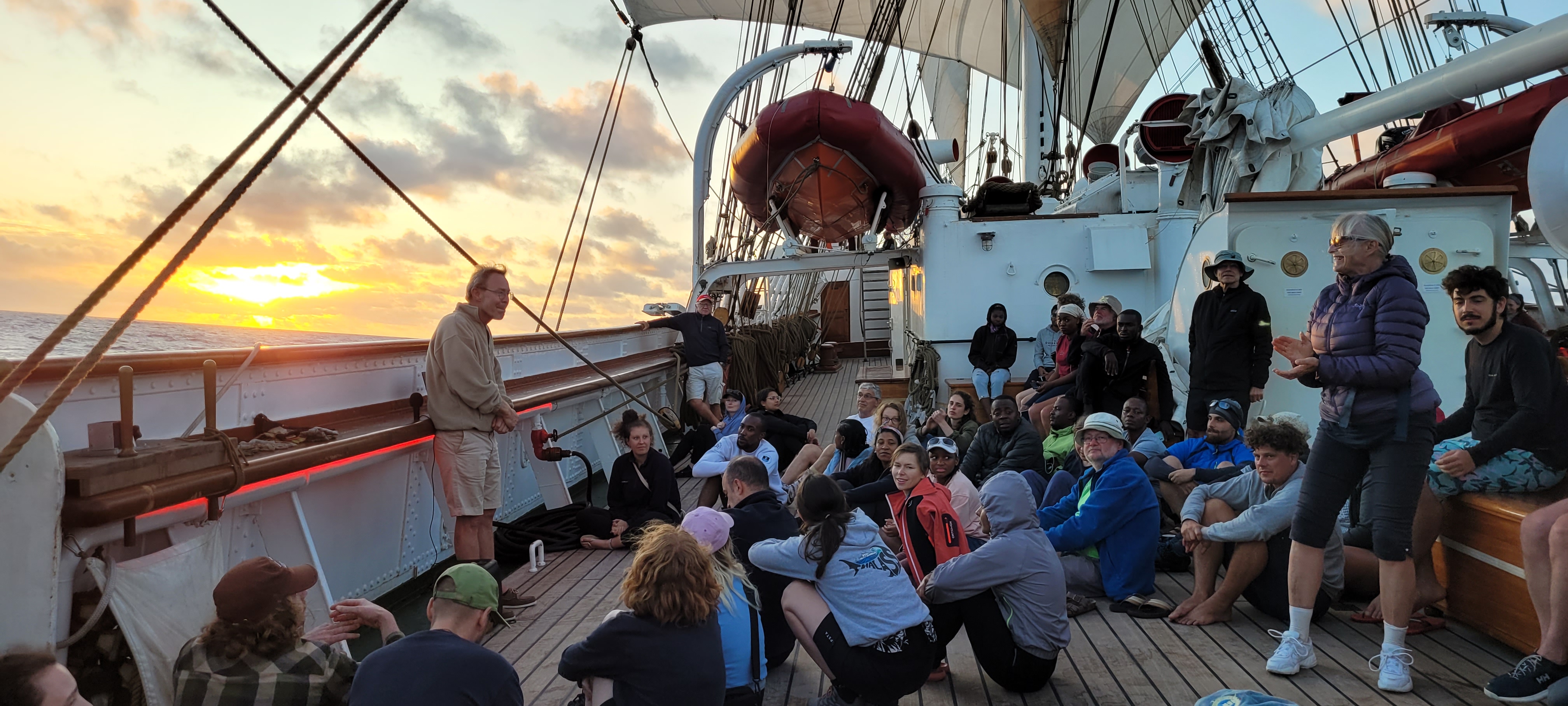
Equipment/what to bring
See the draft packing list document for students and lecturers/supervisors. It is recommended to bring your laptop and charger for working on board.
No hard suitcases! Only bring soft bags. There is limited space on board and no space for hard luggage. To understand the space available on board for each person, please check the packing list, and see the video made by the University of Bergen for their course, which describes the size of the storage space. You will be assigned a locker with keys and a chest for your personal belongings.
Pack some essentials in your hand luggage in case your bags are delayed/lost en route - we will not be able to wait for them. You could consider buying a tracker for your luggage.
Medical certificate
Due to the length of the time at sea, a seafarer’s medical certificate is required for all participants. Read more on the Statsraad Lehmkuhl’s website.
Visas
Students are responsible for checking any visa requirements for Norway, Iceland, Spain and France and procuring any necessary documentation. Please contact the course organisers if you need any documentation in order to obtain a visa, e.g. proof of onward travel.
Travel
All students must arrange their own travel to join and depart from the ship.
All participants must arrive into Tromsø on or before 21st April 2025 and plan their return journey from Nice, France after 6th June 2025. ESA will cover the cost of accommodation and meals aboard the ship. It is suggested to reserve your flights and any accommodation well in advance to minimise costs.
Life on Board
You will be a fellow sailor on the Statsraad Lehmkuhl and an important part of the crew. Together with an experienced and friendly permanent crew, you will perform all the necessary tasks needed to sail – without your efforts, it is actually not possible to sail a ship the size of Statsraad Lehmkuhl. If you want to have an idea of life on board for students, you can check out the full set of videos of the four month voyage over the Pacific Ocean from the University of Bergen, and read the description on the Statsraad Lehmkuhl website.
Accommodation in hammocks
You sleep safely and well in your hammock, side by side with your fellow sailors. Some people are a little skeptical about replacing their bed with a hammock, but you will soon discover that this is a great way to sleep, especially when the sea is not so calm. Then the hammock works like a gyro and limits much of the rocking. You need to bring your own sleeping bag and pillow, mattresses are available.
Being part of a watch
As a fellow sailor, you become an important part of the crew for operating and sailing the ship. Immediately after boarding, all fellow sailors are divided into three different watch teams; red watch, white watch and blue watch. This will be your regular "gang" on the trip. Together with your watch team, you have regular four-hour sea shifts twice a day.
The times for the watches are below. The three groups (Air-sea interactions, Biology, Physics) will each be assigned to a watch in due course:
Red 12-16 and 00-04
White 04-08 and 16-20
Blue 08-12 and 20-00
At each shift change, both incoming and outgoing guards muster (meet). This is necessary to ensure that all fellow sailors are present and well.


Details of the conditions at sea
When sailing out of Tromsø at the end of April, we expect mild temperatures and more daylight, but still cool nights. The wind can be moderate to fresh from the northwest, and the sea can be calm to moderate, but we are prepared for sudden changes in weather conditions.
On our way to Iceland, we cross the Norwegian Sea, which in May/April often offers variable weather. Here the wind can vary from a light breeze to stronger winds, and the waves can be significant, which makes for an exciting and challenging sailing experience.
As we approach Reykjavik, the waters along Iceland's coast will provide a mix of weather conditions. In May, we can encounter mild, moist winds and occasional rain, but also periods of sun and clear skies. Iceland's coastal climate provides a dynamic sailing experience with both calm and more active days.
Once we depart Reykjavik, the voyage offers many different sailing conditions, with both calm periods and strong winds with high waves. This gives you a great opportunity to experience and master a variety of sea conditions!
As we approach more southern latitudes, the climate will become milder, and temperatures will rise. We will make a brief stop at the Spanish island of Menorca to pick up a small group joining us for the final two days of the voyage. Finally, we will arrive at the sunny and elegant French Riviera, where the Mediterranean climate offers calm and pleasant sailing conditions.
All photos provided by students from the previous OTC23 trip, showing life and lectures on board.

